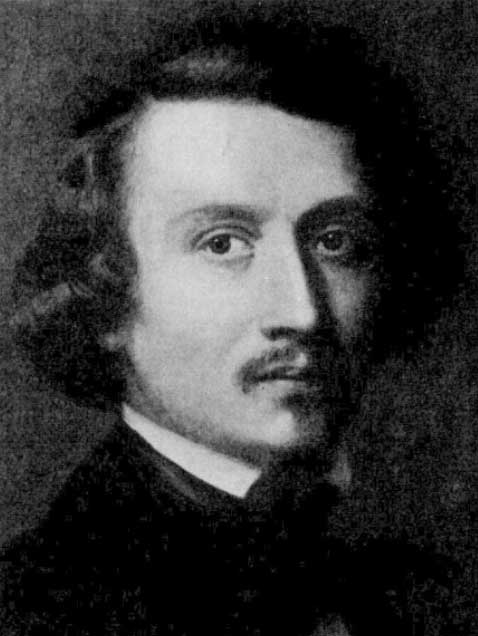Nils Blommér was born in 1816 in Blommeröd, in the historical province of Scania, located in the southernmost part of Sweden. He was registered as Nils Johan Olsson. He had a relatively short career as he passed away at the age of 36 due to acute pneumonia.
Blommér began his career as an apprentice to the painter Magnus Körner in Lund, where he started experimenting with portrait painting at the age of 20. By 1839, he had gained some recognition for his work, allowing him to save enough money to move to Stockholm, where he adopted the monicker “Blommér” and joined the Royal Swedish Academy of Arts.

Nils Blommér in 1848
Blommér was heavily influenced by the artistic and ideological currents of his time. The revival of European mythological past was a constant theme in the 19th-century Romantic movement. Sweden was no exception, and this led the painter to depict figures from Norse folklore, such as elves, set within the natural landscapes of his country. One work that greatly influenced him was the Swedish translation by Esaias Tegnér of the Icelandic epic The Saga of Frithjof. It was this inspiration that drove him to participate in the creation of a distinctly Swedish noble art.
See also:
-
A arte nórdica de Mårten Eskil Winge
-
A arte nórdica de Peter Nicolai Arbo
-
A arte romântica de Frank Dicksee
After repeatedly winning academic awards for his work, he received a generous scholarship in 1847 to travel abroad. In that same year, he traveled to Germany, where he was influenced by the vibrant Romanticism present in the country’s literature, music, and visual arts. He spent some time in Paris, where he was mentored by the academic painter Léon Cogniet. In November 1852, he ended up in Italy, where he married the Finnish painter Edla Gustafva Jansson. Less than three months later, he contracted pneumonia and passed away in Rome in February 1853.
Today, his work is displayed in the major museums of Sweden.



